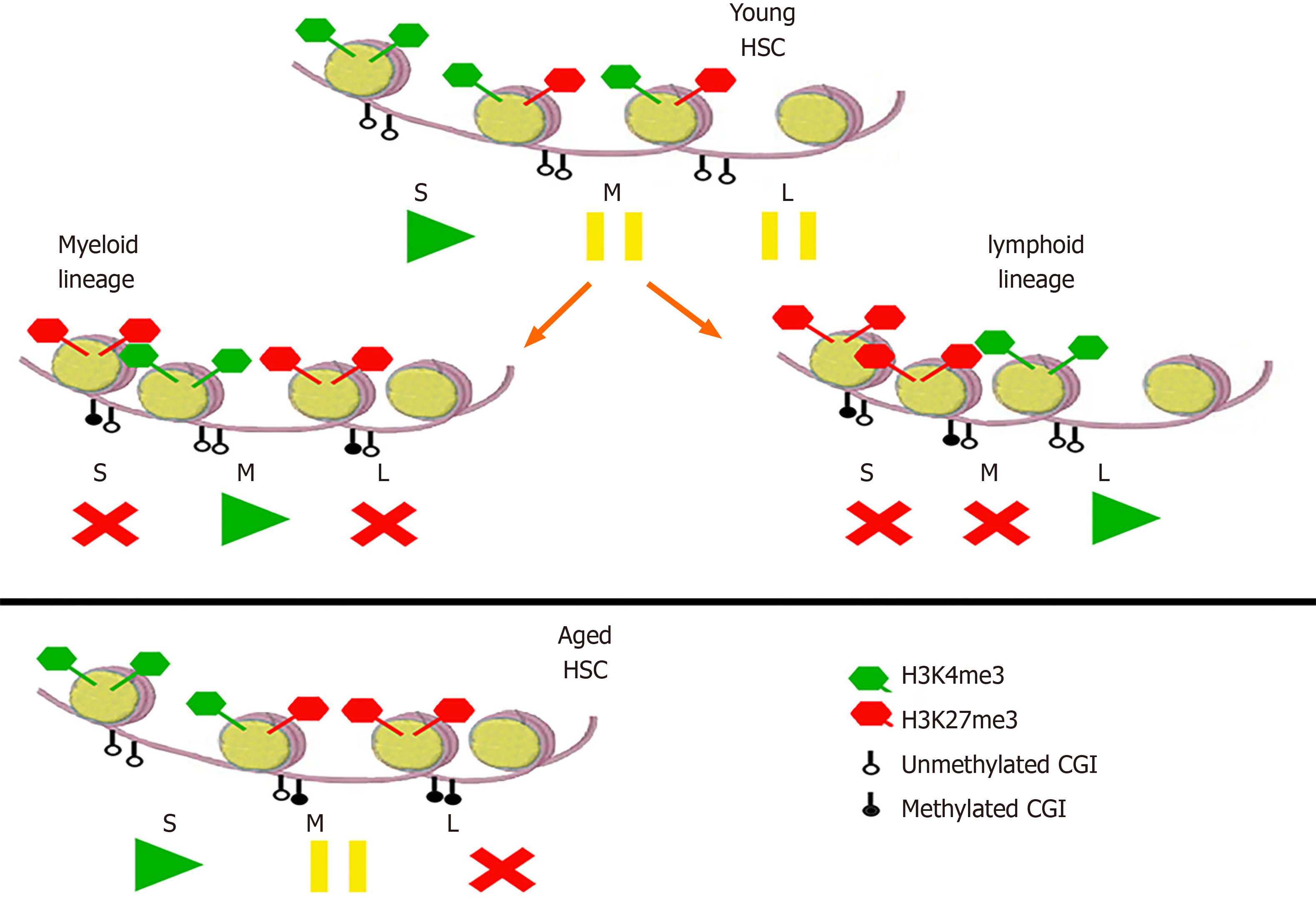Copyright
©The Author(s) 2021.
World J Stem Cells. Jun 26, 2021; 13(6): 594-604
Published online Jun 26, 2021. doi: 10.4252/wjsc.v13.i6.594
Published online Jun 26, 2021. doi: 10.4252/wjsc.v13.i6.594
Figure 4 Epigenetic modifications in hematopoietic stem cells and their progeny.
In young hematopoietic stem cells (HSC), self-renewal (S) genes with unmethylated CpG islands (CGI) and activating H3K4me3 are transcribed, while myeloid (M) and lymphoid (L) genes, with both activating H3K4me3 and repressive H3K27me3, are not, being “in pause”. In the progeny of the myeloid lineage, S and L genes are repressed by H3K27me3 and methylated CGI, while M genes are transcribed. Vice versa, in the lymphoid progeny, S and M genes are repressed and L genes are transcribed. In aged HSC, self-renewal genes have more unmethylated CGI, so their transcription is enhanced; moreover, whereas M genes are “in pause”, L ones are already repressed, so the progeny will transcribe myeloid genes but not the lymphoid ones. The analogy with the “play/pause/stop” symbols is taken from Kosan and Godmann[48]. HSC: Hematopoietic stem cells; S: Self-renewal; L: Lymphoid; M: Myeloid; CGI: CpG islands.
- Citation: Udroiu I, Sgura A. Growing and aging of hematopoietic stem cells. World J Stem Cells 2021; 13(6): 594-604
- URL: https://www.wjgnet.com/1948-0210/full/v13/i6/594.htm
- DOI: https://dx.doi.org/10.4252/wjsc.v13.i6.594









